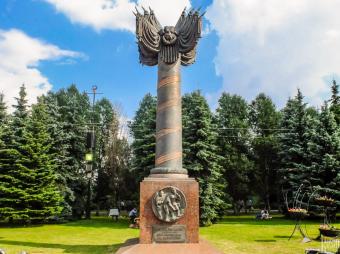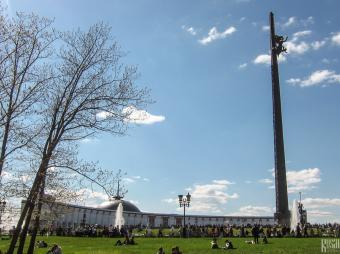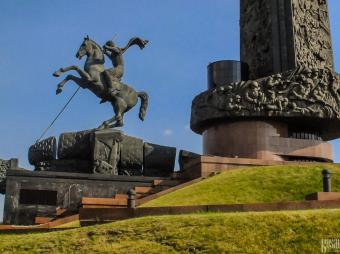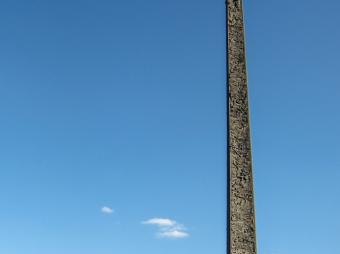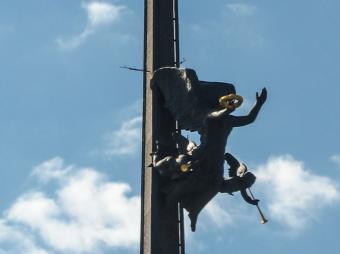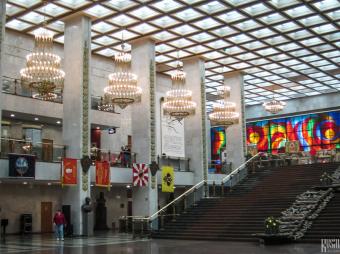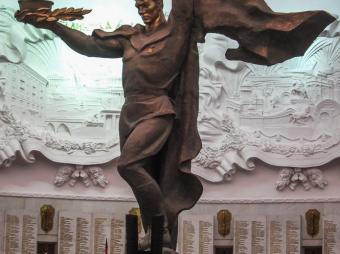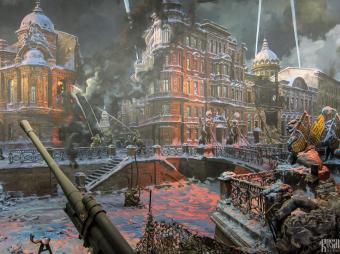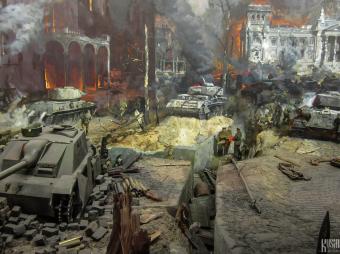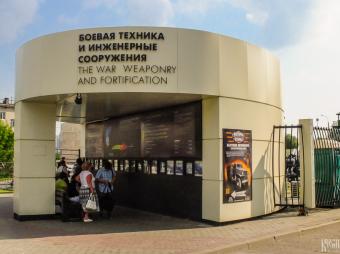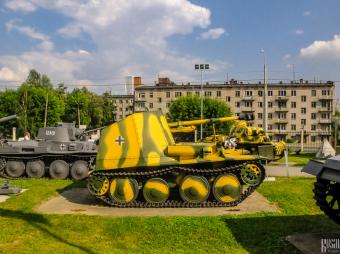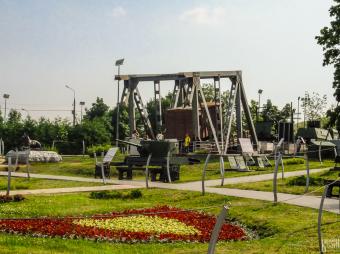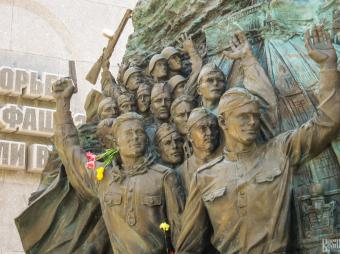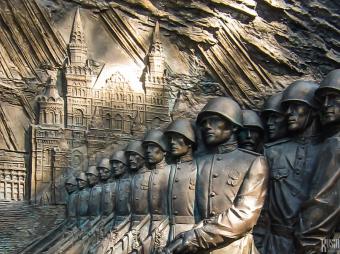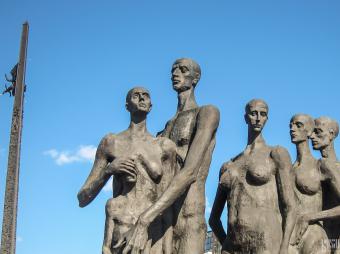Dorogomilovo District
Victory Park
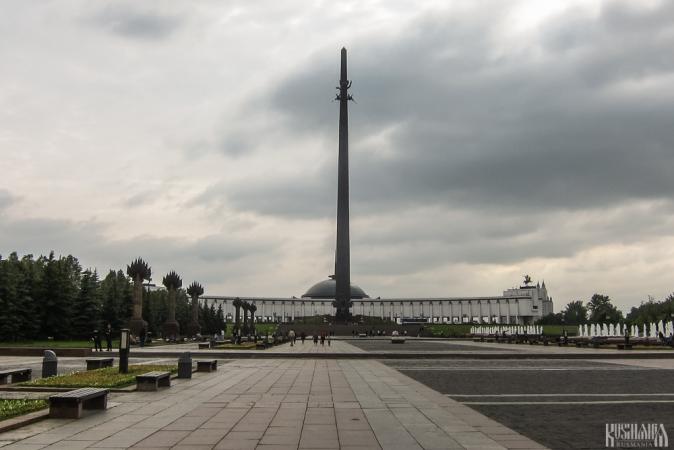
One of the main sights in the west of Moscow is Victory Park (Park Pobedy) which is located on what is known as Poklonnaya Gora (Submission Hill) as historically this was where guests coming to Moscow from the West were expected to bow down (poklonitsya) and pay homage. It was also where Napoleon waited in vain to be handed control of the Kremlin by the Russians after capturing the city. Although the park is in honour of the Soviet victory in the Second World War, it was only officially founded in 1995. Today it is an important venue for Russia's Victory Day celebrations on 9 May where veterans gather and are thanked and given flowers by younger generations.
Triumphal Arch

Just outside the park is Moscow's Triumphal Arch which was constructed between 1829 and 1834 according to a plan by the architect Osip Bove to commemorate Russia's victory over Napoleon. However it was originally built on Ploschad Tverskoy Zastava where a wooden arch was first put up to welcome victorious Russian troops back to Moscow. In 1936 the arch was dismantled and later reinstalled in its current location between 1966 and 1968. The arch is decorated with images of warriors depicting glory and courage and Nike, the Greek goddess of victory, is featured on the top of the arch.
Victory Monument
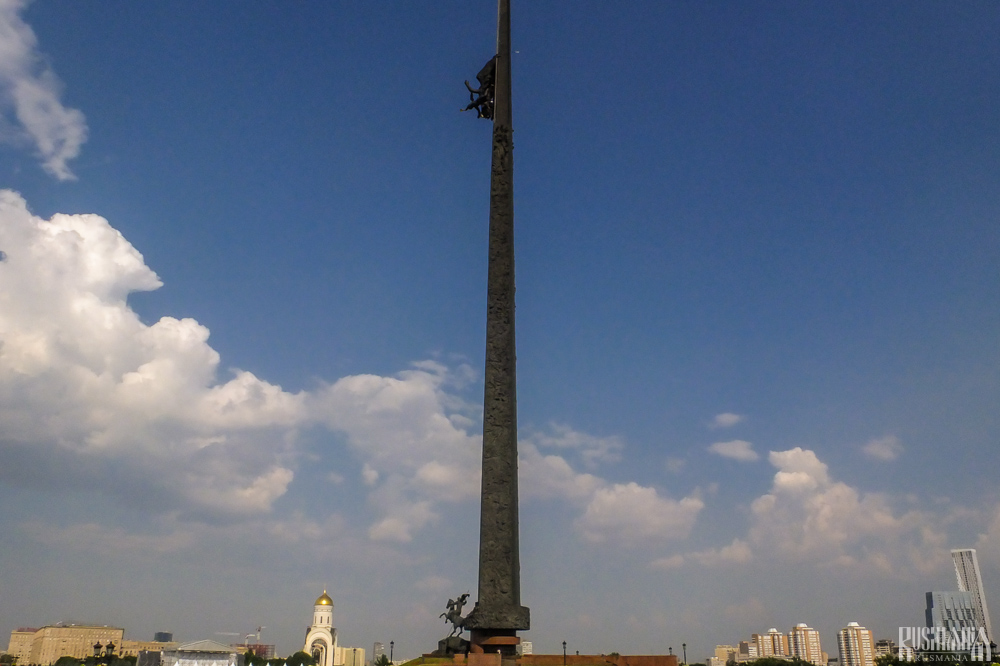
The main monument within the park is the Victory Monument which consists of a 141.8 metre tall obelisk (10 centimetres for each day of the war), decorated with reliefs and with the goddess Nike at the top. At the base of the obelisk is a statue of St George slaying a dragon adorned with Nazi symbols. Just behind the complex is an eternal flame. The monument was unveiled in 1995 along with the opening of the park. It is the work of the sculptor Zurab Tsereteli. The main alley leading up to this monument is decorated with monuments to various Soviet regiments.
Central Museum of the Great Patriotic War

Just behind the Victory Monument is the gigantic semi-circular Central Museum of the Great Patriotic War (which is how the Second World War is known in Russia). The museum was opened in 1995 along with Victory Park itself and details the course of the war and the Soviet victory. Among the more standard exhibitions of documents, photographs, videos and items, the museum also includes six dioramas featuring the Battle of Moscow, the Battle of Stalingrad, the Siege of Leningrad, the Battle of the Kursk Salient, the Crossing of the Dnieper and the Storm of Berlin.
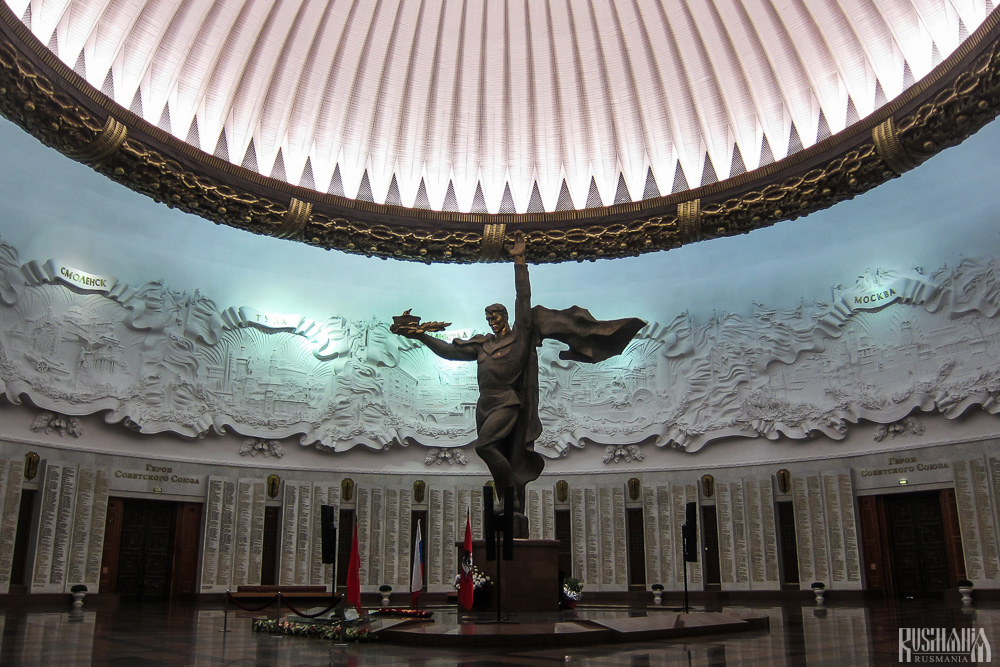
There are also several specially themed halls. The Hall of Commanders has bronze busts of the recipients of the Order of Victory. The Hall of Glory is the central hall in the museum and its marble walls are inscribed with the names of Heroes of the Soviet Union and Heroes of the Russian Federation and in the centre there is a statue of a victorious soldier. The hall is often used for military ceremonies, including when new soldiers take their oath. Finally the Hall of Remembrance and Mourning displays many remembrance books listing the names of 26,600 Soviet soldiers who died or went missing in action during the Second World War. The ceiling of the hall is decorated with crystals symbolizing tears.
St George's Church on Podklonnaya Gora
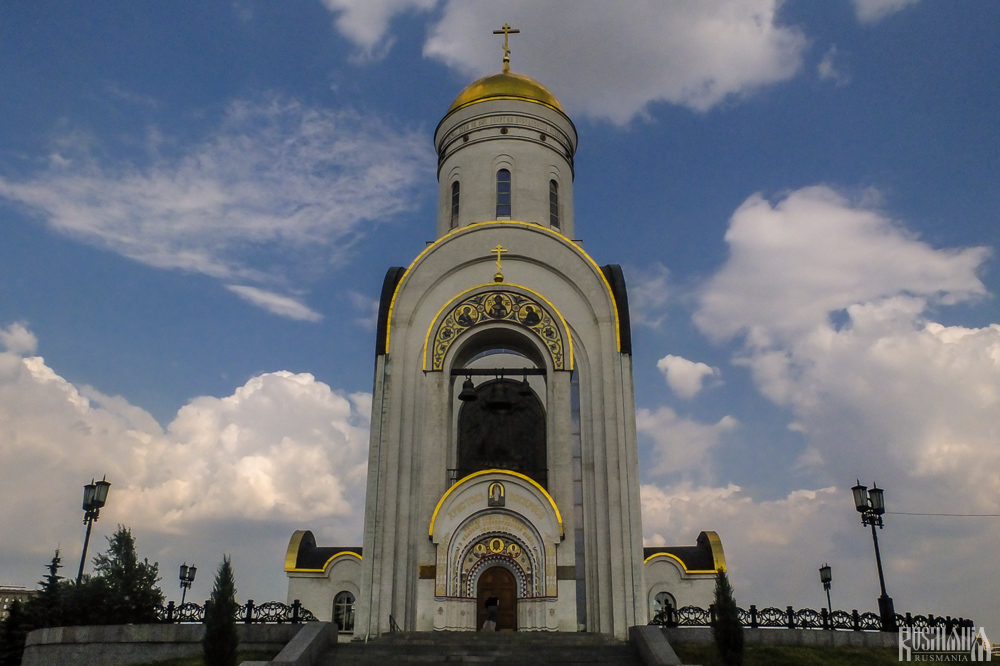
St George's Church on Podklonnaya Gora was the first religious building to be opened within Victory Park. Patriarch Alexius II laid the first stone in 1993 and construction was completed by 1995 to mark the 50th anniversary of the end of the Second World War. In from it is a rather simple tower church with a single dome.
Open-Air Exhibition of Military Equipment
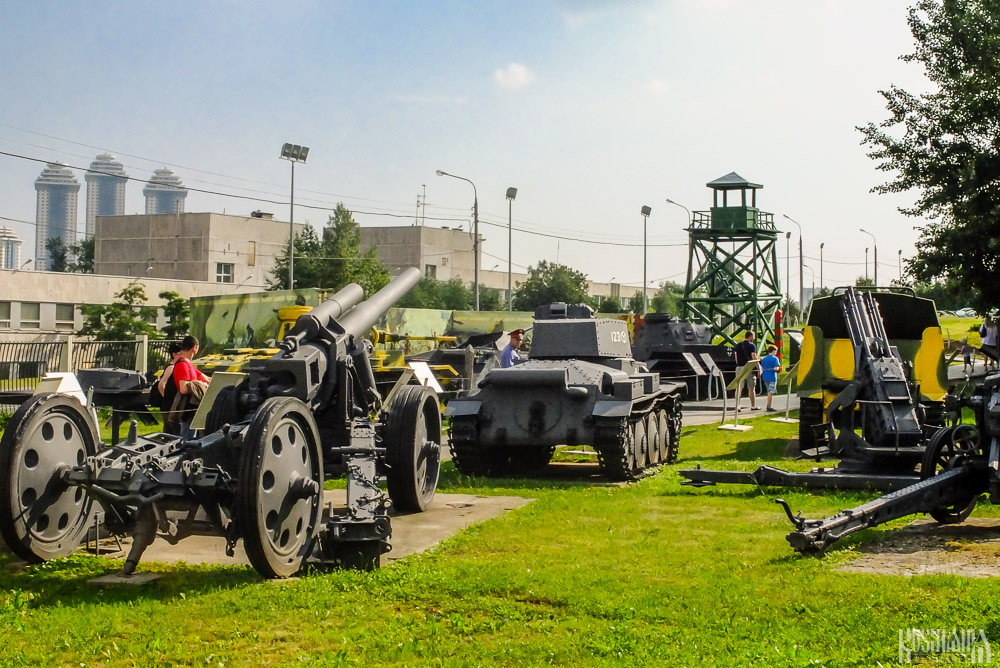
In addition to the Central Museum there is also a separate open-air exhibition where over 300 examples of military equipment which saw action during the Second World War are on display. This includes equipment of both the Soviet Union and its allies and of Germany and its allies. The exhibition also has examples of defensive infrastructure such as tank traps and trenches.
Monument to Soldiers Missing in Action without a Grave

There are several more monuments with a wartime theme dotted around the park. To the east of the Victory Monument is the Monument to Soldiers Missing in Action without a Grave which was unveiled in 1995 and features a wounded soldiers unable to continue walking.
"In the Fight against Fascism We Were Together" Monument
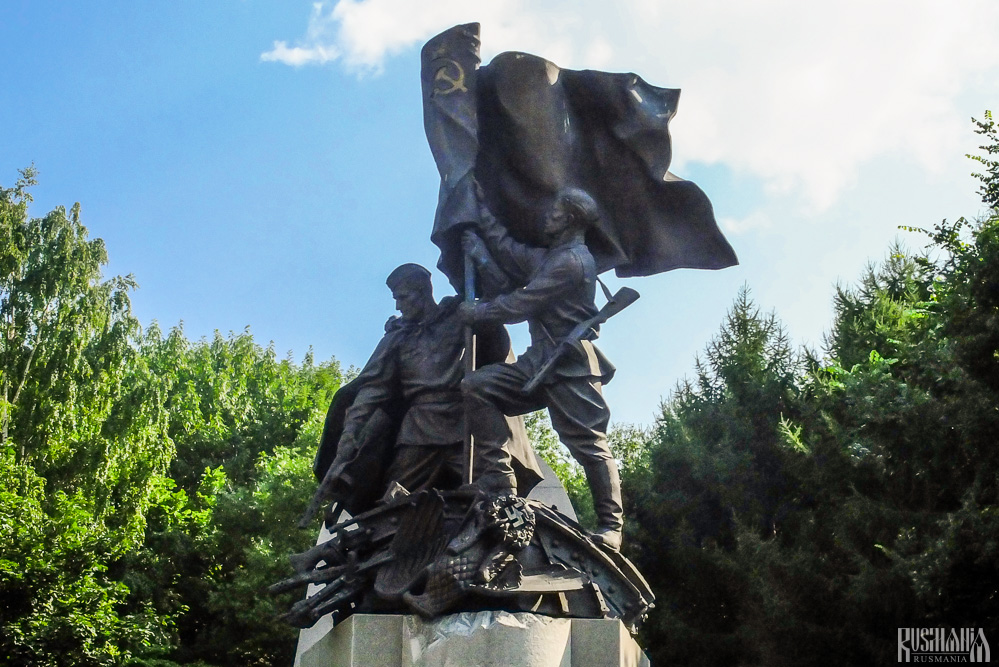
Further back in the park is the "In the Fight against Fascism We Were Together" Monument, which was unveiled in 2010 and dedicated to all the republics of the Soviet Union. The idea to create the monument was partly born in response to the decision of President Mikheil Saakashvili of Georgia to demolish the war memorial in the Georgian city of Kutaisi. The main feature of the monument is a recreation of the two Red Army soldiers raising the Soviet flag above the Reichstag.
Spanish Civil War Memorial-Chapel
Further around the main path behind the museum is a small Memorial-Chapel dedicated to the Spanish Volunteers who died in Russia during the Second World War which was erected in 2003.
Allies Monument
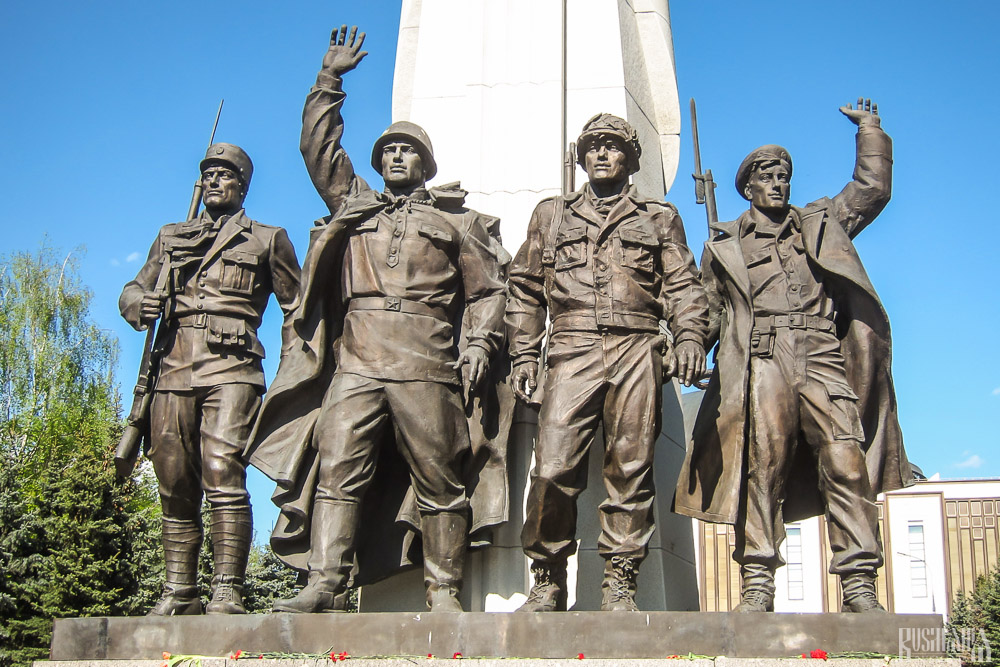
A few metres away is the Monument dedicated to the Allied Countries of the Anti-Hitlerite Coalition, which features an obelisk and statues of soldiers representing the main allies: France, the USSR, the USA and the UK. It was unveiled in 2005.
Peoples' Tragedy sculpture
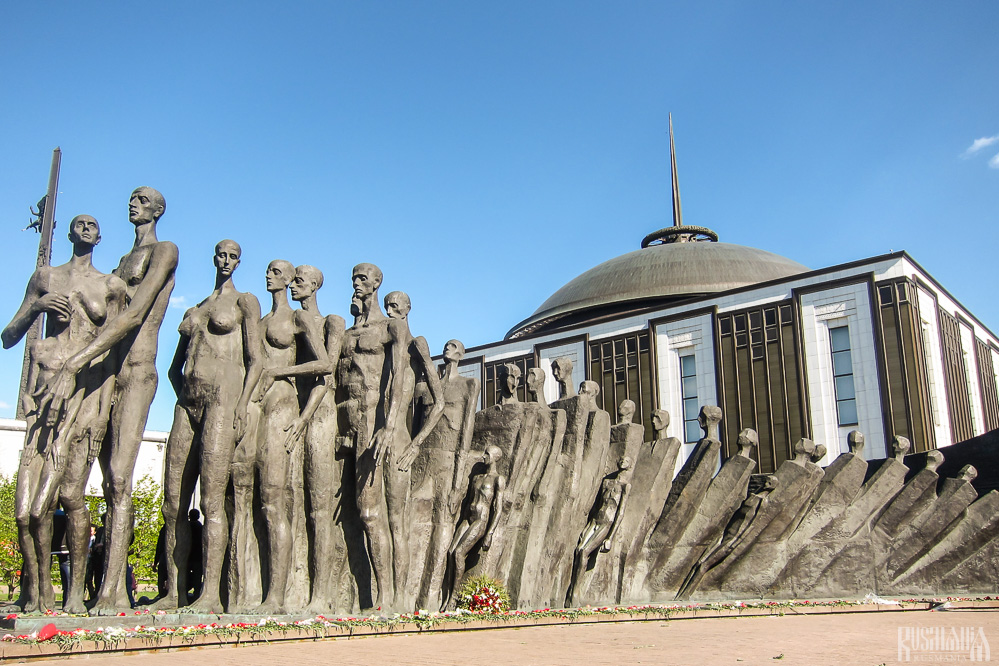
Just behind the museum is the Peoples' Tragedy sculpture composition dedicated to the victims of the Holocaust. The haunting composition was unveiled in 1996 and is also the work of the sculptor Zurab Tsereteli.
Memorial Mosque
In the south-western corner of the park, on Ulitsa Minskaya, is a memorial mosque which was built between 1995 and 1997 using funds from various Muslim republics of the Russian Federation and foreign states. The design of the mosque incorporates the architecture style of Tatarstan, Uzbekistan and the Caucasus.
Memorial Synagogue
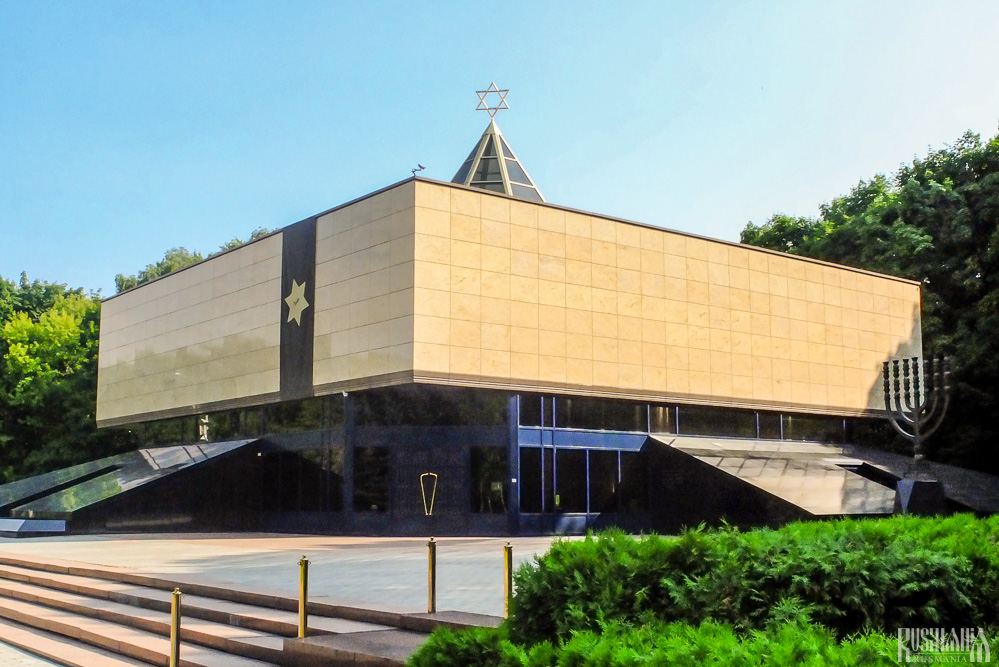
In 1998 a memorial synagogue was opened in the north-west of the park - the park's third religious building after its Orthodox church and mosque. Its construction was funded by the Russian Jewish Congress. The synagogue is dedicated to Jews who were murdered during the Holocaust and also houses a research centre and an exhibition on the history of Jews in Russia and on the Holocaust.
| Location | Ploschad Pobedy, Kutuzovsky Prospekt |
|---|---|
| Metro | Park Pobedy |
| Website | http://www.poklonnayagora.ru/ |

